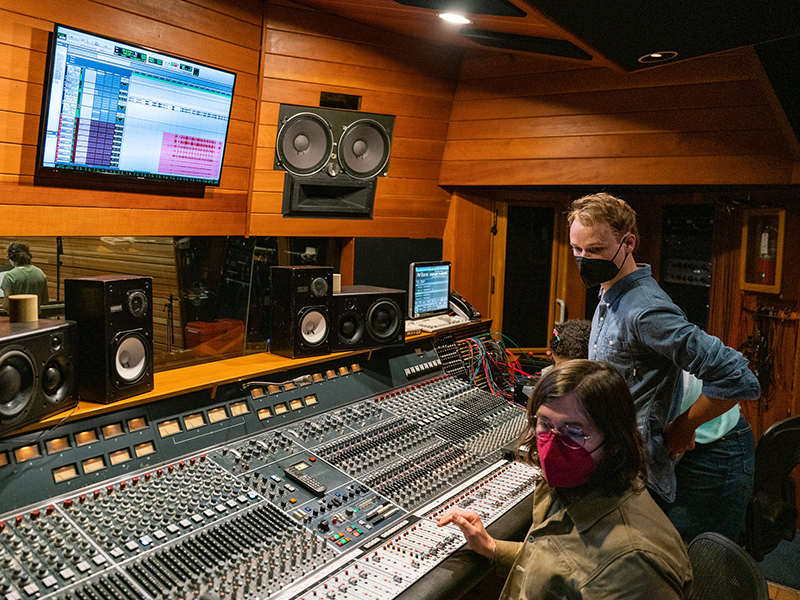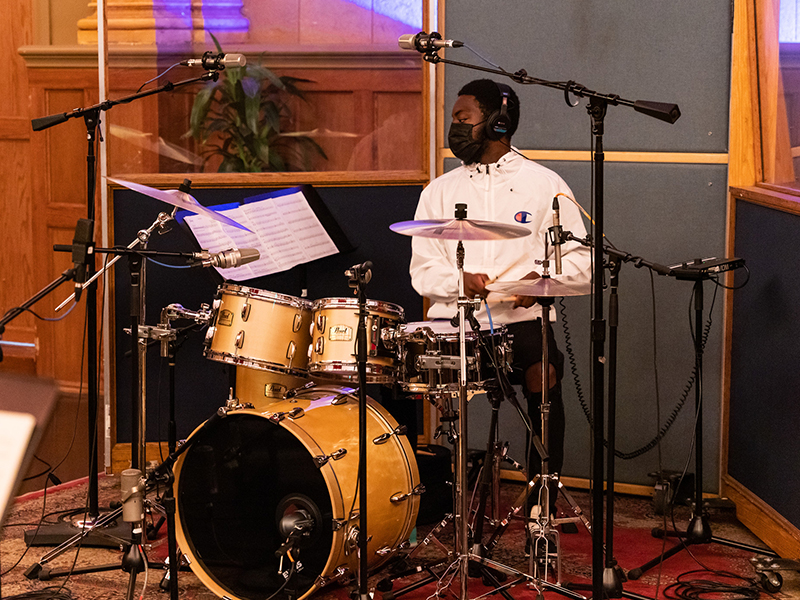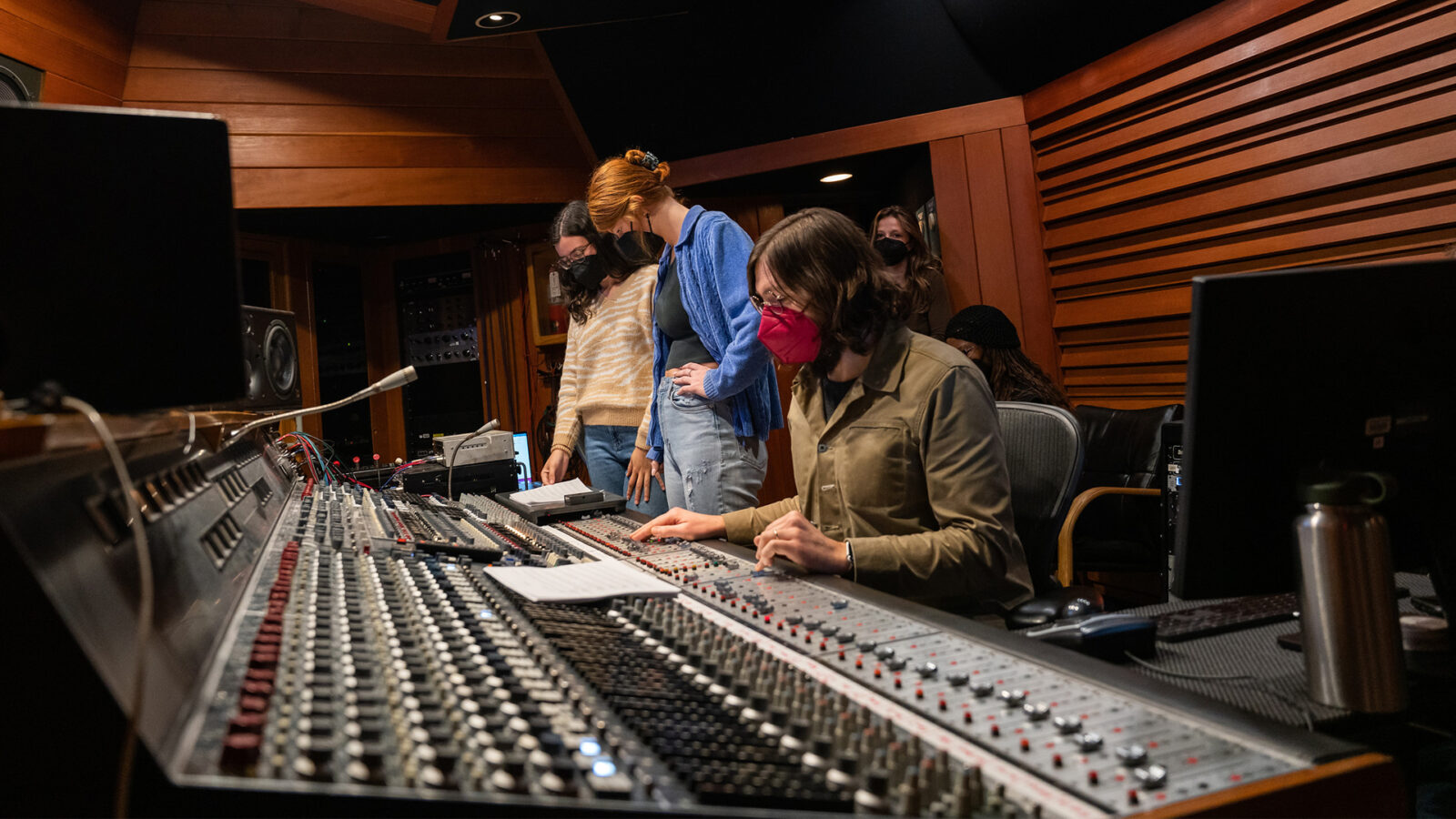
Lessons in Mastering The Recording Studio
By Tyler Francischine

Third-year pop performance program students become session musicians and producers at LA’s historic Village Studios.
When Thornton rising senior David McInnes walked into Village Studios, the storied recording studio in West Los Angeles formerly known as The Village Recorder, he saw walls lined with records from renowned musicians. He realized he was moments away from recording and producing in the very same studios where artists like Lady Gaga, Janet Jackson and Fleetwood Mac created landmark works.
“The opportunity to work in a storied and fabulous studio with some of the finest musicians of our time is a shining example of how USC Thornton has curated such a great space for developing musicians,” McInnes says.
McInnes and his classmates visited the studios this spring as part of their third-year popular music performance class. Faculty like Patrice Rushen, Paul Jackson, Jr. and Tim Kobza guided students through both producing and playing on recordings, songs which the students performed live during the Third-year Popular Music Showcase at USC’s Carson Center in April.
Popular Music Program Chair and Associate Professor of Practice Patrice Rushen says students also received master class instruction on the nuances of performing in the recording studio.
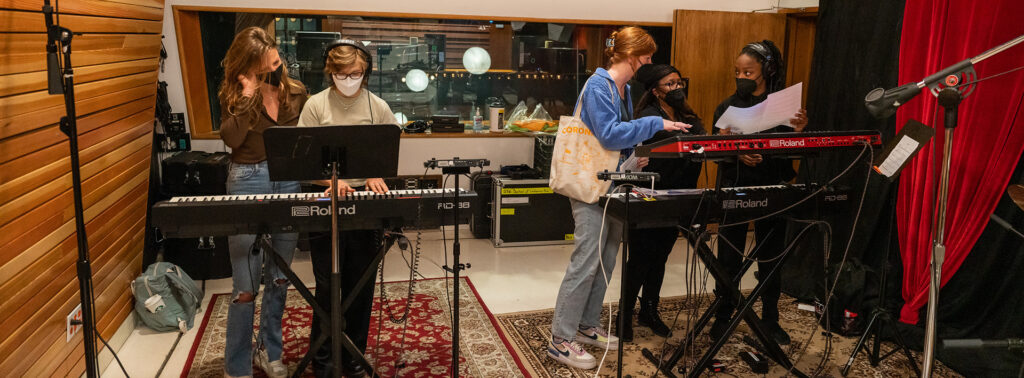
“The focus is on how to best use the studio environment: learning to use headphones, focusing on playing to a click, coming up with parts if written parts don’t exist, interpreting written parts, critical listening in terms of programming and tones and consistency of sound production,” she says.
Thornton Popular Music program rising senior Maria McMillan came into the studio with a demo and was able to see her musical vision realized with the help of her classmates, for whom she provided keyboard tracks.
“I came in with an idea of what I wanted the song to sound like and made sure I budgeted in time for the magic to happen and for the musicians to add their own touches,” she says. “Being a session musician, I learned what was helpful, so when I was a producer, I would implement those same things to make the process easier for the musicians I was working with. And vice versa – when I was a session musician, I tried to help the producer realize their vision.”
For McInnes, learning in a fast-paced, professional environment made for a challenging, enriching experience as he looks forward to a career in the music industry.
“The best part of this experience is getting to work on the fly. You have 30 minutes to get a professional recording of a song. It tests your ability to sight-read and to adapt to a live situation where you’re playing something for the first time,” he says. “It’s a lot of adapting on your feet, which is definitely going to be useful in the industry.”
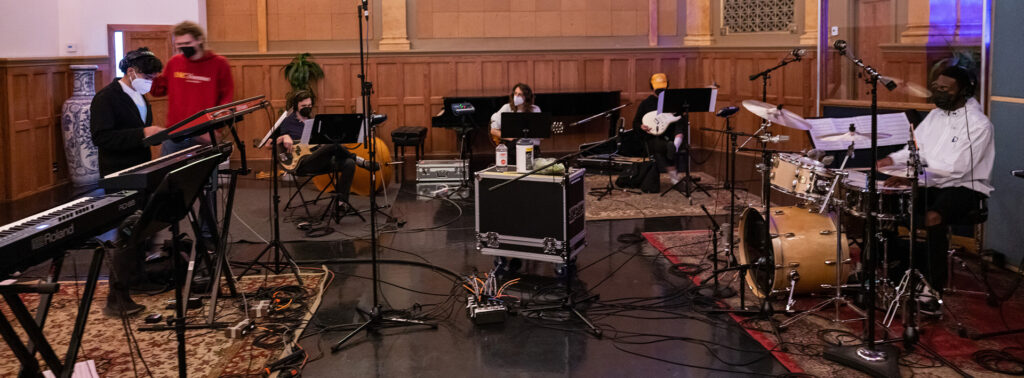
Rushen says the skills her students gained from the visits range from reading abilities to critical listening to teamwork and immediate problem-solving.
“The students will know how to be efficient and be able to use the skills they’ve developed in school to get things done professionally,” she says. “They’ll learn that their job is to serve the music first and foremost, whether that song belongs to them or if they’re in the role of a producer, who is responsible for bringing the vision, or in the role of a studio musician, who has to internalize someone else’s music and make it happen.”
McMillan credits the decades of expertise shared among popular music program faculty members who provide both guidance and freedom for her and her classmates to creatively explore musical ideas in the studio.
“Patrice and Paul give us so much wisdom. They’ve been through it all before, since they’ve played with everyone, so it feels like knowledge by absorption,” she says. “In the studios, they would sit back and let us take the driver’s seat but give us guidance and support when we needed it.”
Rushen, who released seven studio albums in eight years in the 1970s and ‘80s, says when it comes to mastering the recording studio, experience is the best teacher.
“It’s a unique opportunity because certain members of our faculty have done this kind of work and bring to it things you cannot find in a textbook,” she says. “This experience is guided by people who have seen it done well and done poorly and who have experience having to put things together to make hit records and movie sessions and all the things that happen in a studio environment.”
